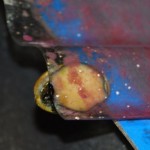It’s a good thing that green abalone aren’t prone to sudden jerky movements – especially when you are trying to delicately affix a millimeter-size color coded circle on them using a tiny squirt of super glue. The intensity level rises when the goal is to tag 1,000 sea snail subjects in one day.
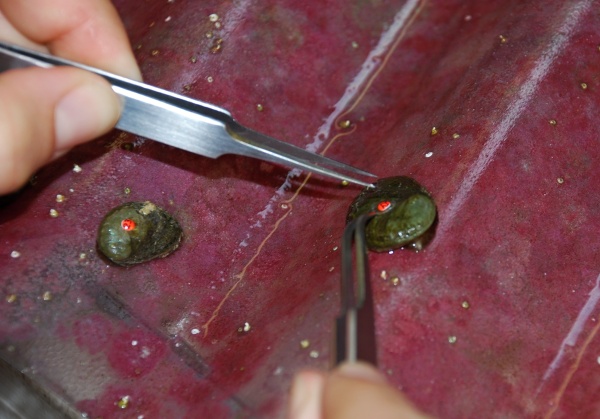
Many hands were doing that recently: working feverishly in a small shed at Redondo Beach’s SEA Lab facilities for this inaugural task; the project will attempt, for the first time, to outplant green abalone raised in captivity into the Southern California marine ecosystem.
Among the casual banter and the steady sound of filtered water running, folks were measuring and recording tagged abalone, organizing completed batches and retrieving new ones.
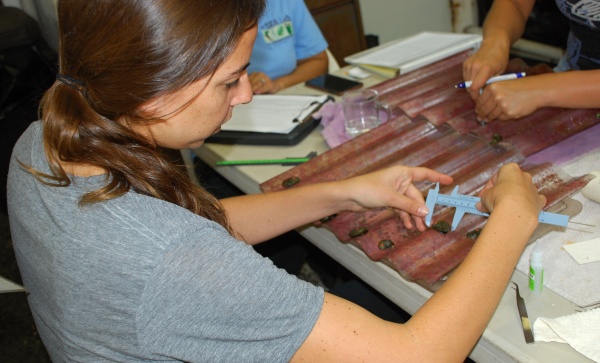
David Witting, a NOAA Restoration Center fish biologist, walked over to holding tanks and pulled out a wavy piece of plastic substrate where 3 and 4-year-old abalone were feasting on red algae, their preferred diet at this age. These youngsters – and hundreds of relatives – were raised at the SEA Lab specifically for this purpose.
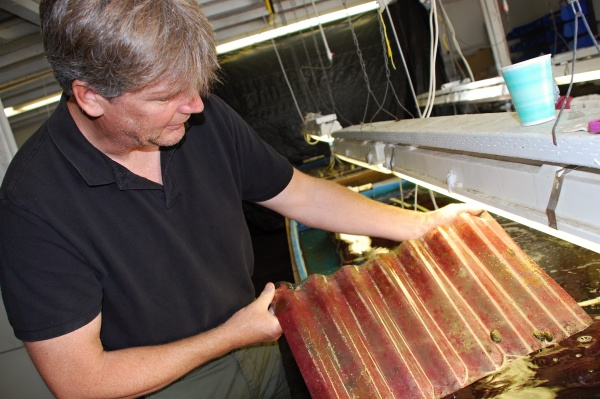
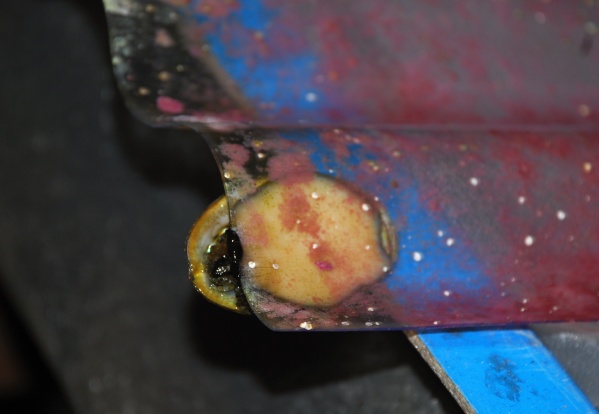
“If the weather cooperates, we are hoping to outplant all these abalone the last week of May,” he says eyeing the inches-long snails. “We’ve been working toward this particular day for some time now. It’s very exciting. There has been a lot of behind the scenes permitting, scheduling all manner of things that leads up to this day.”
It took a consortium of effort to ready these older juveniles for their new homes; the new residents will be placed in newly restored kelp forests off the Palos Verdes coast.
Joining Witting at the tagging table are representatives from the Montrose Settlement Restoration Program, The Bay Foundation and the L.A. Conservation Corps’ SEA Lab; the overall green abalone program partnership also involves the National Oceanic & Atmospheric Administration, the California Department of Fish and Wildlife, the Nature Conservancy, Vantuna Research Group, California Science Center, and Cabrillo Marine Aquarium.
Why all the attention on one kind of mollusk? It’s all about ecology, environment and economics.
For thousands of years, abalone flourished off SoCal coastlines; archeologists have discovered 12,000-year-old red abalone shells in the Channel Islands. The Chumash and other indigenous people used red abalone shells to make hunting tools, ornaments and other artifacts.
Abalone was also very tasty for European settlers and would become the source of a huge commercial fishery industry in Southern California for decades. It was also a darling of recreational collecting by divers. But over-harvesting in the 1970s, habitat loss and the debilitating Withering Syndrome disease decimated the general abalone population to today’s small communities of certain species.
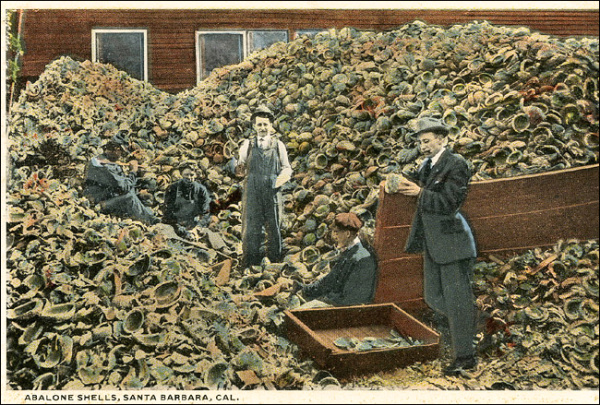
Currently black and white abalone are in danger of extinction while green abalone are listed as only critical. (Why all the color names? Just a species designation – for all its multi-colored iridescent qualities, abalone shells do have certain hues.)
Witting explains that methods done today to prop up the population of the green abalone could be the future template for restoring white and black species back into the wild. Sea snails that thrive in kelp-laden waters have a dual goal for both nature and man.
“Our hope is not only to restore these animals because they are an important part of the ecological community but they are also part of our socio-economical community as well,” explains Witting adding that “lots have been learned over the last 20 years on how to manage abalone fisheries and recreational take in a sustainable way.”
The tags on the outplanted abalone will allow biologists to identify and track their growth and survival rates. If all goes well, these critters will live 20 to 30 years, spawn numerous times, and repopulate their communities.
“Abalone need neighbors in order for their populations to survive and to successfully reproduce,” explains Witting. “They are broadcast spawners; both males and females shoot their gametes into the waters and they meet together in the water column. External fertilization.”
(In addition to captive spawning at the Sea LAB, biologists are doing wild spawning. Divers find wild abalone and bring them on the boat deck where they induce spawning and then return them to the wild. This method isn’t as taxing as the time-consuming and costly task of raising captive abalone.)
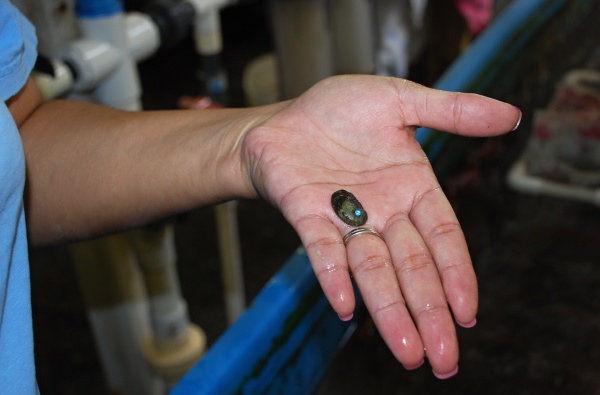
As they continued their delicate tasks, taggers discussed the next steps for these youngsters. They will be transferred into PVC houses where they will be acclimated; soon after, these temporary shelters will be put in the ocean waters. “We have to give them a couple of days to get used to the new environments that we are presenting to them,” says Witting.
“Each step could be a little traumatic. We don’t want to stress them. We want to make sure they are ready for this big move. There’s a lot riding on them making it through these first few steps.”
Or in the case of the sea snail called abalone, these first few gliding crawls…
